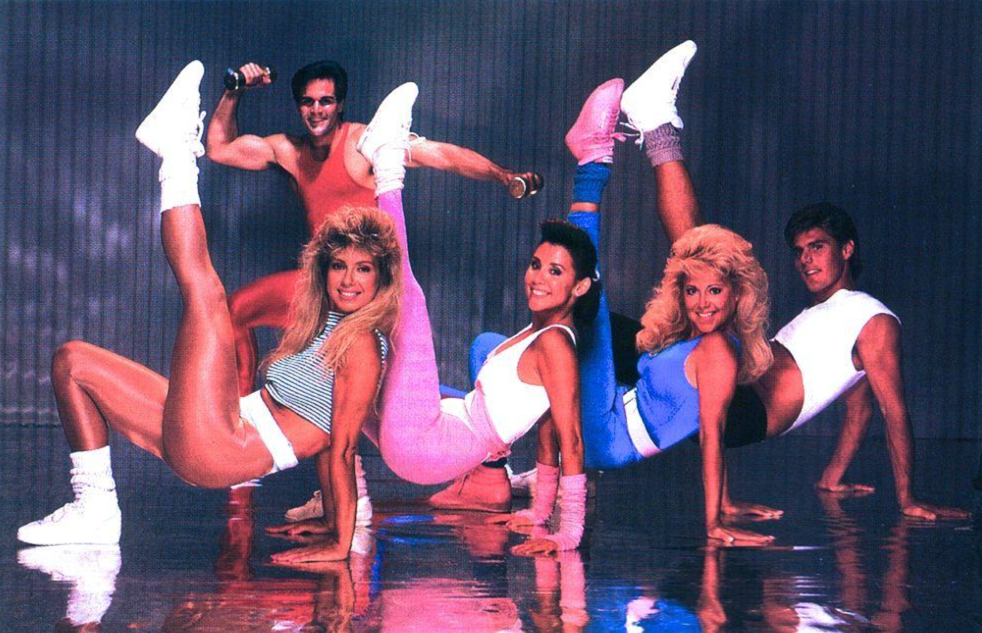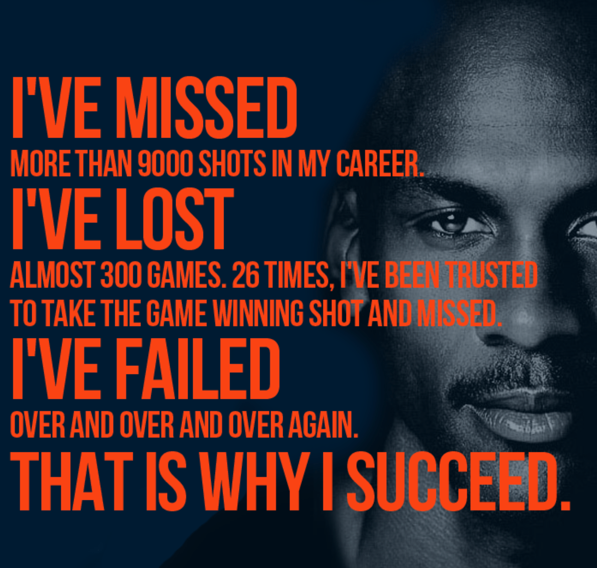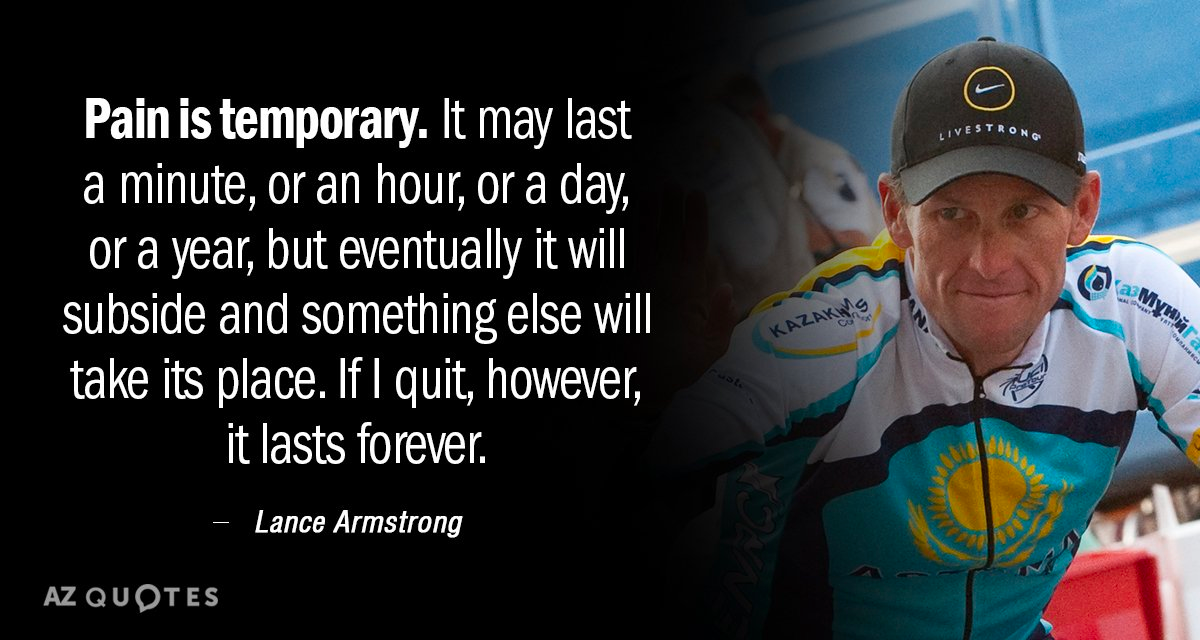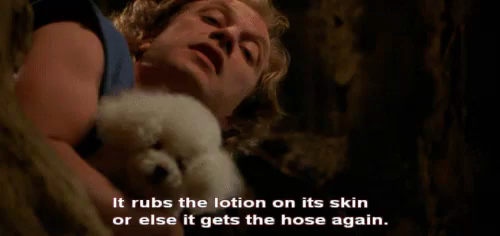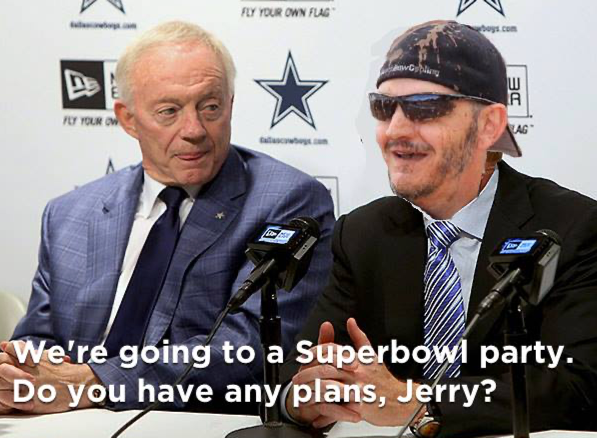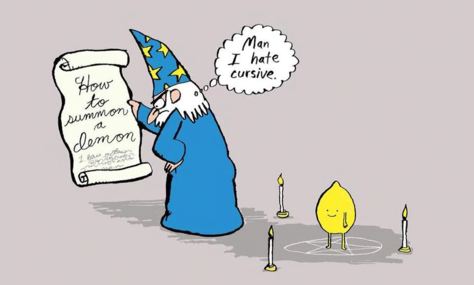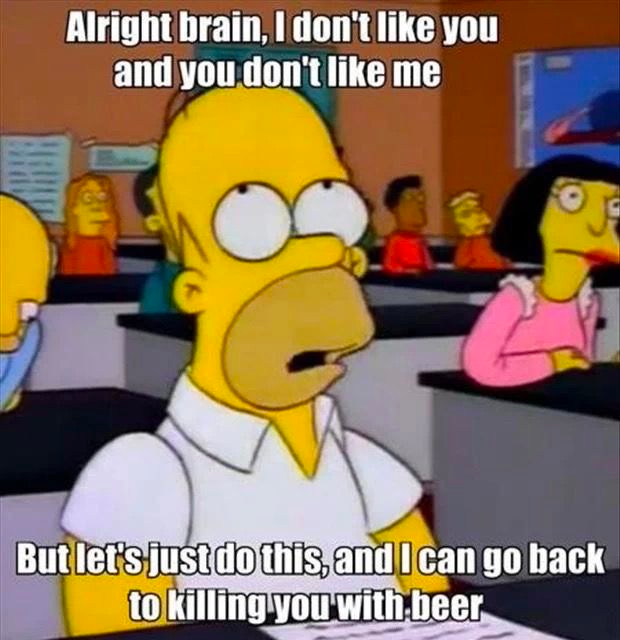Subsections of Physical
What's Your "Why"?
Welcome
Welcome to the physical component of the challenge, and congratulations on making it through the nutrition component. Over the last 2 1/2 weeks, we’ve covered all the core concepts you need to build and maintain a sustainable nutrition plan for life. Don’t worry if you still have questions. You weren’t successful the first time you tried to walk, ride a bike, or do a pull-up. The important thing is that if you fall six times, you get up 7.
Once the challenge is over, you can go back through these emails and reread them, learning new things that you may have missed the first time. Or maybe I’ll turn this all into a book… ¯\(ツ)/¯
Why…
Why do you work out? It’s easy to say “to get in shape,” but what does that really mean? Who cares? Why does it matter? What is the fundamental, uncompromising goal that drives your physical fitness plan? Most of us don’t have one. That’s why we struggle with fitness. We do it when it’s easy, but because there isn’t a core life-defining reason behind it, it’s easy to quit too.
Spend a few minutes to dig into “why.” What does it mean to be in shape, and why does it matter? For me, it’s meditative, spiritual; it’s the foundation of my purpose in life.
Meditative
Pursuing physical fitness can have meditative qualities. When performing a heavy lift, you have to focus. Think about performing one clean and jerk: before approaching the bar, you visualize what a perfect lift looks and feels like. You step up to the bar. Set your feet hip-width apart. Take a deep breath and hold it. Bend down to the bar, and wrap your hands tightly around the bar at shoulder width. Raise your hips to engage your hamstrings. Bring your chest up. Relax your arms. Pull. Straighten your back and pull your elbows high when the bar passes your knees. Feel the bar accelerate; when it reaches its peak, drop underneath and catch it in a front rack position. Engage your butt and legs to drive the bar up again. Use your arms to drive your body back underneath the bar. Catch it with your arms locked out. Stand up straight. Lower the bar to the front rack position. Drop the bar to waist level and lower it back to the ground while keeping your chest up and a neutral spine.
One rep.
Notice what is not a part of the movement: what time of day it is, who is talking, what you’re going to have for lunch, that meeting you have at work. Focusing on every rep in your workout provides the opportunity to free your mind from the daily grind. That’s one of the goals of meditation. To intentionally direct the thought and power of your mind to a specific task, whether lifting a weight or focusing on your breathing. Doing so in the context of physical fitness can leave you physically exhausted but mentally refreshed. Many times this allows your brain the time it needs to think of creative solutions to problems that have been plaguing you (similar to those great ideas you get while in the shower).
##Spiritual Another aspect of fitness that can be motivating is exploring what I call the spiritual side of it. How much can you do? What is your actual limit? When your brain says you’re done, you’re only at about 40% of your physical capability. You only have one life, one body, and as far as I know, there is no credit at the end for unused portions.
No man has the right to be an amateur in the matter of physical training. It is a shame for a man to grow old without seeing the beauty and strength of which his body is capable. –Socrates
Death itself does not scare me; we all go through it. What scares me is after death, seeing what I was truly capable of and not even being close.
Purpose in life
What is your legacy? What is your purpose in life? It may be to serve as an inspiration to your children, family, or community. It could be to lead by example. Oddly, no matter the purpose, it will be filled with obstacles and challenges. Physical training provides the discipline as well as strength to navigate those challenges.
We may not have the good fortune to live in prosperous times like we do right now. You may be shocked at that statement. “Right now?” Yes. Right now. I get it. There’s a global pandemic. We’re being constantly manipulated by organizations for profit. The list of bad things goes on, but it’s still pretty good. Review history; it doesn’t take long to realize how much worse things can get. When they do, the strong will survive, and it will be too late for those who want to get strong. I owe it to my family, friends, and community to be ready for hard times every day. If hard times don’t come today, my training is still helpful in fulfilling my purpose in other areas of life.
Reflect on why your training is vital to you. Not just the “look sexy” aspect but what it means as a core component of your life. It will change the way you work out. It will change the quality of your workout. It will change your mental approach to working out.
Today’s Tasks
Don’t forget to complete today’s tasks for the challenge.
- Drink 1 gallon of water
- Workout for 45 minutes
- Read ten pages from your book
- Stick to your meal plan Once completed, head to the tracking site and mark them as completed to track your progress for the challenge. Tomorrow we look at failure. Is it good? Is it bad? Should you avoid it?
Plan To Fail
Think about this: as a toddler, were you successful on your first attempt to walk? Did you try once and decide it wasn’t for you? Probably not. You got up. You fell. You got up again. Eventually, you got it, which is cool because I can’t imagine your life if you still resorted to crawling everywhere as an adult.
Somewhere along the way, though, we learned that failure was bad. We were taught that failure means losing, and no one wants to be a loser. It’s time to unlearn that behavior. You’ll either fail or you’ll never accomplish anything significant. Sure, sometimes failure hurts. That’s ok because that’s usually where the lesson is, and nothing is permanent.
Fail Fast
Personally, I use the motto “fail fast.” When I wake up each day, my job is to fail as fast as possible. Doing so eliminates all of the ways that won’t accomplish my goals for the day, leaving only the ways that will help me accomplish them. Failing fast also implies that I’m looking for failure. This helps identify it earlier and avoids spending more time than is necessary on it.
Planning To Fail
Let’s bring all of this hypothetical talk to a real-world example: how do you plan to fail? You first have to identify what success and failure look like. Let’s imagine doing a back squat. A successful back squat involves racking the bar on your back, squatting below parallel, keeping your chest upright, and returning to a standing position. So what does an unsuccessful back squat look like? It can be:
- not squatting below parallel
- not keeping your chest upright
- unable to stand the weight up from the bottom Here’s the critical part: what will you do when you identify failure? Often, it’s too late to devise a plan once you fail. You need a plan before you start. Let’s say that you are at the bottom of the squat and can’t stand it back up. You are likely in a compromised position. You are at risk of injury. You are stressed, and thinking clearly is hard.
This is not the time for planning.
Instead, before you ever take the bar off the rack, you need a plan for failure. Identify that you may be unable to stand the weight up once you hit the bottom of your squat. In that situation, you need to be able to unload the weight quickly and safely to try again. So you’ll come up with this plan: “At the bottom of the squat, if I can’t stand it back up, I will over-exaggerate, keeping my chest upright. I will drive forward with one leg while shrugging the weight off my shoulders. This will result in the bar dropping behind me while I safely move forward out of the way. That’s a lot, right? But it’s essential. In this case, the penalties for not planning to fail involve injuring yourself, which may take many months to recover. Such is life.
You can’t avoid failure. You can’t ignore it. Embrace it. Let it guide the way.
Today’s Tasks
Don’t forget to complete today’s tasks for the challenge.
- Drink 1 gallon of water
- Workout for 45 minutes
- Read ten pages from your book
- Stick to your meal plan
Once completed, head to the tracking site and mark them as completed to track your progress for the challenge. Tomorrow we’re going to talk about fitness goals, specifically functional fitness.
Failure is simply the opportunity to begin again, this time more intelligently. –Henry Ford
Functional Fitness- Lift Heavy, Real-World 💩
Today we’re going to talk more about “why” we work out. It’s great to look sexy, and that may be a strong motivator for you, but it may not be enough to keep you focused on your fitness day after day for the rest of your life. What other areas of our life does fitness impact?
Mental
Studies from the National Institutes for Health show that physical exercise reduces anxiety, depression, and negative mood. Who’s not looking for that in 2020? 😅 As mentioned on day 17, exercise can have a meditative effect producing some of the same benefits as mindful meditation. It’s also great for focusing your attention which oftentimes frees up your subconscious brain to solve problems that have been plaguing you previously.
Survival
We live in a pretty safe world. It’s been a few years since we’ve thrown anyone into prison for stating the Earth revolves around the Sun. We typically don’t burn people at the stake for witchcraft. Most of us don’t have rotating sleep schedules so that someone is always on guard, watching for members of a warring tribe attempting to raid our home, kill our children, and rape our women (or men, I’m not judging). However, we can be called into action at any moment. You may be called upon to rescue loved ones from a car accident. Your home could catch fire, and you are the only one to assist until the fire department arrives. Natural disasters can leave us exposed to the elements.
When tragedy strikes, it is too late to begin training.
This is why we train. Looking good in a bathing suit is great, but protecting and defending my family is better. It’s essential to put this in perspective, though. I don’t go through life anticipating horrible events, waiting for the world to crumble. I have no control over such events, and worrying about them only induces stress and anxiety about things that may never come. But I train. And if it happens, I’m ready.
Under pressure, you don’t rise to the occasion; you sink to the level of your training. –Navy SEALs
Community
Despite recent advances in online communication, humans are still tribal by nature. This means we have a sense of obligation to help members of our community. Help may be in the form of:
- helping a friend move
- working with your neighbor to build a deck
- changing a flat tire for a stranger
- putting together a community event
- assisting a relative in recovering from a medical condition
All of these have a physical component to them. When called upon to do these tasks, being strong and functional are key components to being an asset.
Financial
Being physically fit and strong helps you financially as well. In addition to helping clear your mind to focus at work, it also keeps you active and mobile and reduces your chances of getting sick, all of which allows you to do the thing you do that provides the income your family needs to survive and prosper.
Discipline
By practicing a daily commitment to your physical fitness, you exercise discipline. Discipline itself is a muscle that can and should be trained. By improving your discipline skills through your fitness regimen, you will find that your ability to stick to a plan improves in other areas of your life.
The Whole Picture
Maintaining and improving your fitness level isn’t just about being in shape. After all, “round” is a shape. Being in shape is not specific enough to be actionable as a goal. Consider how your fitness integrates with other areas of your life and incorporate that into your “why” when you think about fitness.
Today’s Tasks
Don’t forget to complete today’s tasks for the challenge.
- Drink 1 gallon of water
- Workout for 45 minutes
- Read ten pages from your book
- Stick to your meal plan
Once completed, head to the tracking site and mark them as completed to track your progress for the challenge. Tomorrow we address the darker side of fitness with our topic It rubs the lotion on its skin.
It Rubs The Lotion On The Skin
Imagine this: you get kidnapped and thrown into a pit. Your captor demands that you put lotion on your skin, or he violently hoses you down. But you blew off mobility and stretching on your recovery days and can’t reach your back to put lotion on it. Your only option now is to lure that damn little dog into the pit and use it for negotiating power. Stretching and mobility doesn’t seem like such a waste of time now, does it?
If you haven’t seen Silence Of The Lambs, that joke made no sense. Trust me; it was funny as hell.
All kidding aside, can you put lotion on your back? All of your back, including the area between your shoulder blades. If not, you have shoulder mobility issues. It’s the most straightforward test I know of. Most of us spend the majority of our day in a fairly limited position (i.e., seated at a desk), so don’t be surprised if you struggle to do this. The fix is pretty straightforward but requires commitment on your part. We’ll get into the details further below.
The reason you want to do this (aside from the scenario above) is limited shoulder mobility will cause injury. Without good mobility, you’re forced to compromise your form to complete certain tasks (like a pull-up, overhead squat, or even a push-up). Compromising your form will lead to injury, injury further compromises your form, and the circle spirals downward from there. It may not be necessary to you now, but when you’re older, getting that can of peas off the top shelf without pain will be a pretty sweet deal, or maybe picking up those grandbabies you’ve been waiting for.
Fix It
The fix is simple and only requires a few minutes from your busy day. I’ll step away from my desk several times daily and do the exercises below while thinking through a problem. Bam! Two birds, one stone.
Touchdown
The first exercise is much like signaling a touchdown. If you’re a Dallas Cowboys fan, a touchdown is when someone from your team takes the ball and runs it into the end zone. This is a common technique for scoring points and winning football games.
Stand facing the wall, just a few inches away from it. With your hands at your shoulders, slide your arms up the wall to signal a touchdown. Pull your shoulder blades together at the very top, causing your hands to come away from the wall. Slide your arms along the wall back down to your shoulders. That’s one rep. Repeat 20 times. Move your arms slowly and feel the range of motion in each rep. This is not a WOD, be patient and deliberate.
Swinging Gate
Stand with your feet shoulder-width apart; arms stretched out front at shoulder height. Step back with your right foot, allowing your head and right arm to follow as if you were a swinging gate. Return to the starting position. That’s one rep. Repeat 20 times with your right arm, then 20 with your left. Or do your left arm first, then right. I don’t care.
Pushups
Yeah, I know. Pushups. Do them anyway. Pushups are great for shoulder mobility because pushing off the floor provides a stable base for strengthening your shoulder while increasing mobility (if done correctly). Aim for 10 perfect pushups. If that means from your knees, so be it. Start on the floor with your hands just outside of shoulder width, thumbs slightly forward. Push using your chest and lats while keeping a tight core. No sagging, and unless you are going into a cocoon to become a beautiful butterfly, no caterpillar pushups. At the top of your pushup, push higher to get a few extra inches out of the rep. During this stage, focus on feeling your shoulder blades move from your back to wrap around your chest. This is key. Most of us who are desk-bound have frozen shoulder blades, and this will begin the process of returning them to their natural, fluid state. For extra mobility practice, do the pushups with different hand positions: wide stance, close stance, one forward/one back, fingers facing each other, and fingers pointing away. This changes the movement to get a full range of motion from the shoulder socket.
Today’s Tasks
Don’t forget to complete today’s tasks for the challenge.
- Drink 1 gallon of water
- Workout for 45 minutes
- Read ten pages from your book
- Stick to your meal plan
Once completed, head to the tracking site and mark them as completed to track your progress for the challenge. Tomorrow we’re going to talk about things that suck.
Embrace The Suck
Pain is real; suffering is optional.
A few years ago, I pinched the nerve in my neck that goes down the right side of my body. The weird thing about nerves is they don’t really know where the problem is. They receive an electrical signal from somewhere down the line. Usually, you receive a signal of pain from some part of your body. You look to see what is going on and notice blood coming from your finger. Your brain deduces that must be the source of the problem.
When nerve damage occurs, your brain receives signals, but there is no obvious sign of injury. As a result, it sometimes felt like my shoulder was torn. Other times I thought it was my elbow. Sometimes it felt like I had hurt my neck. The muscles would spasm consistently in response to nerve signals that weren’t there. These symptoms would alternate non-stop throughout the day. My doctor prescribed muscle relaxers, but they had no effect. Then he prescribed opioids, again with no change. Next, he prescribed anti-seizure medicine for epilepsy patients, again with no impact. Then I started taking all 3. Physically there was no change in my symptoms, mentally, though, I was a complete mess. It hurt to stand up. It hurt to lie down. It hurt to move my arm; it hurt not to move my arm.
Finally, in my daily reading, I stumbled across the phrase above pain is real, suffering is optional. I quit taking all of the medicine. Mentally I committed to not giving in to the pain. It was just an electrical signal, and I would treat it as such. When I moved my arm, I would not wince. I would not groan. It hurt, but that was merely an electrical sensation, and I would not allow it any more mental focus than flipping a light switch.
Things began to change after that. Physically, nothing was different about my injury, but mentally by refusing to give it focus; it became less obtrusive. One step forward, even if it is a small step. Eventually, I recovered physically but grew exponentially mentally, and that’s the lesson here.
Putting It To Practical Use
So how do we apply that story to honest, actionable advice that we can use?
First, when you’re deep into a demanding task, embrace the suck. Acknowledge the pain, but do not give in to the suffering. Pain is real, but suffering is self-imposed. Suffering can come in many forms: negative self-talk, groaning out loud, or closing your eyes to shut out reality. All these expressions reinforce the part of your brain saying, “I can’t.” Remember that when your brain says I can’t, you are only at about 40% of what your body is physically capable of.
Dear Negativity, You are welcome to bitch, moan, gripe, complain, and voice your objection to the current situation. Understand that you have a voice here but don’t get a vote. Sincerely, Brain
Second, break your goals down into micro-goals. Instead of having a goal of doing ten clean and jerks, set a micro-goal of doing one. When that gets challenging, set a micro-goal of doing a clean, then another micro-goal of doing a jerk, then another micro-goal of lowering the bar. Always moving forward, even if measuring inches, not miles. Always forward, never back.
When the negativity sets in, remind yourself of the current goal and focus on that. Arguing with it, shouting over it, or trying to turn it off it doesn’t work. You can’t turn it off, but you can choose to focus on something else.
Never argue with an idiot. They will drag you to their level and beat you with experience.
One final note: use common sense. If you injure yourself during a workout, stop. There’s no glory in fucking up your body, even worse during training. There’s a difference between pushing through pain and trying to push through injury.
Under pressure, you don’t rise to the occasion; you sink to the level of your training. –Navy SEALs
Today’s Tasks
Don’t forget to complete today’s tasks for the challenge.
- Drink 1 gallon of water
- Workout for 45 minutes
- Read ten pages from your book
- Stick to your meal plan
Once completed, head to the tracking site and mark them as completed to track your progress for the challenge. Tomorrow we will learn about visualization and how to use it for everything from minor tasks to major life goals.
Visualization
I’m straight up not gonna lie; visualization is a superpower, a magical spell, a gift bestowed from the Gods, and today I’m going to share with you how to use it in all areas of your life. But first: why does it work?
Stoopid Brain
Your brain takes care of a lot without your intervention. Breathing, making your heart beat, regulating bodily functions, etc. It also is busy solving problems while you are focused on something else (think about those brilliant ideas you get in the shower). It’s also responsible for your dreams, fantasies, and even nightmares as it weaves various bits of data it has seen or heard about into a story.
Despite all the great things it does, it has one weakness: your subconscious brain can’t tell the difference between reality and fantasy. Only the outer layer of your brain can do that. And we can make this little piece of information work for us.
Setting The Stage
To take advantage of this, you need to visualize the thing you want to happen and you need to do so consistently with enough time for the changes to occur. For example, if your current deadlift is 200 pounds, rolling off the couch, brushing the Cheetos dust off of your gut, and visualizing lifting 500 pounds while reaching for the barbell isn’t going to work.
Sorry.
But! If you hope to do the Murph workout next Memorial Day full Rx with a weight vest: you’re in luck. Each day before going to the gym, spend 5 minutes visualizing that day. Imagine it in as much detail as possible: think about what the weather will be like, what you’ll be wearing, the music, and how excited you will be as you accomplish your goal. Engage as many of your five senses as you can. With consistency, your subconscious brain will not know the difference and assume that this is how it is. Your body will then start making subtle changes in how you perform to meet the expectations of what your brain believes to be true.
Put It Into Action
I won’t tell you what limits you can put on this (and you shouldn’t either). I will tell you, though, that you should be very specific. Don’t say “I want to be in shape”, say “I am at 15% body fat, back squat twice my body weight, and feel great.” Whatever you visualize has to be measurable so that your brain can accurately make the necessary adjustments. And again, when you say that statement to yourself, think about how you’ll look. Picture yourself doing the perfect back squat. Hear the sound of the PR bell as you ring it. Feel your gratitude and pride in accomplishing your goal as you see everyone congratulating you.
Where It Applies
You can use this in other areas of your life besides physical fitness. The only requirement is that you can visualize it. Money, food, fame, sex, it doesn’t matter. It also is highly effective at short-term tasks, such as your next 60 minutes of gym workouts.
Once you know what the WOD is, think about how you will do it. For example, let’s say there are back squats in the WOD. You hate back squats, and you suck at them. Period.
Well, that’s not an empowering thought.
Instead, acknowledge that you suck at back squats, then spend 5 minutes visualizing what you would look like doing the workout if you didn’t suck at them. Picture yourself doing perfect reps. Look at the plates on the bar. See how your chest remains upright, and your heels stay on the ground for every rep. Think about how these perfect back squats also improve other areas of your life. The more places in your life you can “hook” the visualization to, the stronger it becomes. Doing so instructs your brain on what the desired outcome should be. Pretty soon, your back squats will start to look like your visualization.
One more place you can use this: micro-goals. When under extreme stress, you can’t focus on big-picture goals. You have to break it down into something achievable. I used to be a 24-hour mountain bike racer. For 24 hours, I would ride up mountains, over logs, through mud and snow, and off cliffs. There are times during a 24-hour race when you can’t visualize the race ending. Instead, I would visualize the sun coming up and the warmth it would bring. I would visualize the daylight lighting the trail instead of my little headlamp. When that seemed too far away, I would break the goal down smaller: I would visualize making one perfect circle as my foot pedaled around the crankshaft.
Perfect circle.
Perfect circle.
Perfect circle.
It didn’t matter that my foot was attached to a carbon fiber crank arm that could do no shape other than a perfect circle. It gave my mind a task, a desired outcome, and a means to accomplish it. With that in place, I could keep progressing and do my job.
Put It To Use
Think about your goals. No, I mean seriously think about them. What does your life look like once you’ve achieved them? Visualize that and let your brain know what the desired outcome should be. It doesn’t matter what your goal is. It doesn’t have to be world peace or ending world hunger. It only has to be important to you.
Today’s Tasks
Don’t forget to complete today’s tasks for the challenge.
- Drink 1 gallon of water
- Workout for 45 minutes
- Read ten pages from your book
- Stick to your meal plan
Once completed, head to the tracking site and mark them as completed to track your progress for the challenge. Tomorrow we continue the impact of physical fitness on our lives as we talk about the negative side of physical fitness.
Your Wheelchair
Here you go: go ahead and take a look. If you’re lucky enough, you will live long enough to need one of these. Have you thought about which kind you’d like? What features are important to you? Do you have a color preference? Leather seat or vinyl?
I get it. You probably haven’t given this much thought, and you may find this conversation a bit morbid and unsettling.
Instead of pretending this future doesn’t exist, ask yourself “how can I change it?” You may not be able to avoid it entirely, but you can nuance the details. For example, every day you train your mind and body, you push the day you inevitably need a wheelchair further into the future. This can be part of your “why” when you ask yourself “why am I going to the gym today?”
This concept continues a theme we’ve been exploring the last few days: the visual component of fitness may well be the least significant of all the reasons to be physically fit. For most of us, though, it’s the first (and sometimes only) thing we think of. The work you put into your body today lays the foundation for your fitness in the future. Your body is the ultimate retirement account. It’s the only place you have to live. You can’t start putting money into a 401k at 62 and hope to retire comfortably by 65. Investing for retirement works best when done in small, consistent increments throughout your life. Investing in your body works the same way.
If you’re lucky, you’ll live to a ripe old age. Aches and pains will increase, and mobility will decline each year. You need to hit them with as much momentum as possible to make the most of those years. The decline in fitness in your older years is going to happen regardless. Where you start the decline is entirely up to you.
Today’s Tasks
Don’t forget to complete today’s tasks for the challenge.
- Drink 1 gallon of water
- Workout for 45 minutes
- Read ten pages from your book
- Stick to your meal plan
Once completed, head to the tracking site and mark them as completed to track your progress for the challenge. Tomorrow, I’ve got a bonus challenge in store for you!
Giving Back
Today we are jumping the gun a bit and combining a physical component with being part of a community (which we’ll discuss in more detail starting on day 36).
Are you as excited as I am? Probably not, but here we go anyway!
Inspired by Cranksgiving, you and your fellow participants in this challenge are going to organize a race to collect items needed by a local charity. Here’s how it works:
- Contact a local organization such as a food bank, homeless shelter, retreat, or church and ask what items they need donated
- This list is given to everyone participating
- Pick a date, time, and location for the event
- You can choose your mode of transportation: bikes, skateboards, roller blades, or the ol’ shoe-leather express
- Race to see who can gather the items from the list the fastest from the most locations
- After everyone meets back at the starting point, decide on a winner (prizes are optional)
- Hang out, celebrate, reflect
- Donate everything collected to the chosen charity
This challenge carries multiple winning factors with it. First, it represents the need for real-world, functional fitness. Looking good in a mirror does you no good if you can’t make tracks while transporting a turkey, baby! It also connects you with the needs of your community, as well as a solution for solving that need. Finally, it connects you with other people in your community in a way that brings you closer together and bonds you to a common cause.
If you try this, be sure to let me know how it went!
Today’s Tasks
Don’t forget to complete today’s tasks for the challenge.
- Drink 1 gallon of water
- Workout for 45 minutes
- Read ten pages from your book
- Stick to your meal plan
Once completed, head to the tracking site and mark them as completed to track your progress for the challenge. Tomorrow we are going to talk about caffeine. When should you use it, why you should use it, and how much is the right amount.
Caffeine- When Why, and How Much
Who doesn’t like caffeine, right? Most of us are fond of our caffeinated drink of choice and the rituals that go with it. Today we will examine caffeine’s upsides, downsides, benefits, and risks.
How Caffeine Works
Many mistakenly believe caffeine gives us the much-desired energy to power through our day. It’s the opposite effect. During your awake hours, your body produces adenosine. Adenosine then attaches to specific neural receptors, which signals our brain that we are getting tired. The caffeine molecule fits into those exact same neural receptors, blocking the adenosine molecules from attaching so our brain doesn’t get the “I’m tired” message.
How Much Is Too Much?
Ask most people how much caffeine they consume, and they’ll answer in terms of cups of coffee or the number of drinks. This is a meaningless metric, though. A cup of coffee, a Monster Energy Drink, and Red Bull all have different amounts of caffeine. Even a cup of coffee can vary from one cup to the next depending on where you get it, the type of bean used, etc…
The only accurate way to measure caffeine intake is in milligrams (mg). To calculate your daily caffeine intake, you must know how many milligrams of caffeine your favorite beverages have. Most Americans get the majority of their caffeine from coffee or energy drinks and not from soda, pop, or Coke (or whatever name you use, depending on what part of the country you are from).
So… how much is too much?
**The short answer is 400 mg per day. **
The long answer is (as always); it depends. Caffeine tolerance can vary widely from person to person. Trial and error is the only way to find out, but as a general rule no one should exceed 400 mg daily. One of the best indicators is your quality of sleep. Caffeine may be to blame if you don’t sleep well or are a light sleeper.
Does It Help Performance?
Maybe.
Sort of.
Not really.
This is one of those areas where there isn’t a lot of research to form a conclusive opinion. Some of the best studies have come from studying the impacts of caffeine on endurance athletes. Caffeine stays in your system for up to 5 hours, so they are the best candidates to benefit from and measure the effect of caffeine on performance. So what did the study show?
Ready?
A 1% - 3% boost in performance.
So if you qualify for an Olympic or professional-level event, 1% may mean the difference between first and second place. I could not care less about shaving 1% off my Murph time. I don’t even want to do the math to see how insignificant that would be.
The Benefits Of Caffeine
That doesn’t mean caffeine is entirely worthless, though. It just means that’s not the missing ingredient keeping me out of the CrossFit Games. Again, there is not a lot of research in this area, so all of these benefits come with the “early studies indicate…” disclaimer. There’s a suggestion that people who consume more caffeine have a lower incidence of basal cell skin cancers. Caffeinated coffee is associated with a lower risk of diabetes and may be associated with a decreased incidence of Parkinson’s disease. There is also an association with a reduced risk of mortality. This doesn’t mean enough caffeine will make you immortal or prevent you from dying. Still, people who consume caffeinated coffee have a decreased risk of dying at any particular later age. Keywords: “lesser chance,” not “zero chance.”
The Risks Of Caffeine
Notice what I didn’t say in the section above. I said people who consume caffeinated coffee, not people who consume caffeine. Where you get your caffeine from makes a difference. Energy drinks are loaded with extra stuff you don’t need. Honestly, that is where the “energy” comes from, not the caffeine. As we learned in the beginning, caffeine doesn’t provide energy, it simply blocks the adenosine from attaching to the neural receptors to signal your brain that you are tired. Any energy boost you get comes from something else, and in the case of energy drinks: it’s usually sugar. The extra sugar can wreak havoc on your nutrition plan and thwart any goals you have in that area. For sugar-free energy drinks, you should ask yourself “what is in here that provides energy? Chemicals? Stimulants? Meth?
One of the other risks of caffeine is impacting your sleep schedule. Caffeine stays in your body for up to 5 hours, and the amount of caffeine needed to interrupt your sleep schedule varies wildly from person to person. If you want to sleep better, it’s worth experimenting with reducing caffeine consumption.
Increased anxiety is a considerable risk with caffeine and is not often discussed. Anxiety can come in many forms, and numerous factors can influence your anxiety. However, if this is an issue for you, much like sleep, it may be worth experimenting with reducing caffeine consumption.
And finally, the word no one likes to hear when talking about caffeine:
Addiction.
You don’t need me to tell you this: caffeine is addictive. I get it; the effects of caffeine aren’t even close to those of other addictive things like cocaine, meth, gambling, or tobacco. Odds are, you aren’t going to take up prostitution or burglary to finance your caffeine habit. But it is addictive.
Can you try going without coffee for a day? A month? Make yourself invulnerable to your dependency on comfort and convenience, or one day your vulnerability might bring you to your knees. – Ryan Holiday
What bothers me most about caffeine addiction is the loss of control. I will schedule my day around fueling my caffeine fix.
That pisses me off. I’m the Captain. I say when and where. And for that reason alone, I monitor my caffeine intake and frequently discontinue its use to prevent long-term addiction.
Take-aways
So, wrapping this up: the benefits of caffeine seem to outweigh any risks, but from a performance perspective, caffeine will not get you there. Take a day and record how much caffeine you consume and be mindful of that number. Consider eliminating caffeine for 30 days to break any dependency on it. Doing so is not as traumatic as you envision.
Today’s Tasks
Don’t forget to complete today’s tasks for the challenge.
- Drink 1 gallon of water
- Workout for 45 minutes
- Read ten pages from your book
- Stick to your meal plan
Once completed, head to the tracking site and mark them as completed to track your progress for the challenge. Tomorrow we’re going to tackle your annual physical.
The Annual Physical
Until a few years ago, my visits to the doctor were limited to events I couldn’t fix myself, like bones sticking out of the skin and such. I treated my doctor like a mechanic. “Fix it. Send me a bill. Don’t give me any of that scheduled maintenance bullshit.”
I went to the doctor to have some work done. It turned out the last guy I saw was no longer there. If all his patients were like me, he probably went broke and now works at Subway. The new doctor came in and started reviewing my records. “Jesus, dude. We don’t have any info on you…” I thought that was a compliment. (Hint: It wasn’t) The doctor then took the time to explain that things start to change as we get older. (I knew that already) But you can only identify that if you knew what the numbers were before the change. It’s like saying, “The car hit the wall and rolled away at ten mph". What was the speed before hitting the wall?
Kinda important.
The other key detail is that many standard metrics are specific to you. For example, my creatine levels indicate I have stage 3 kidney failure. I’m not, though; that’s just where my numbers are. The numbers used to identify different diseases and problems are based on averages across the population. By definition, average means that some people must be higher than the average number, and others must be lower. That’s how averages work, so you must visit your doctor annually for a routine physical.
It’s also helpful to build a relationship with your doctor. Tell them about what you do outside of your visit to take care of your health, like following a nutrition plan and working out. This helps them provide better advice to you. It also lets them know you are interested in your health and take it seriously. When things do come up (because they will), you’ll be better informed and prepared to deal with it.
The best time to plant a tree was 20 years ago. The second best time is today.
Today’s Tasks
Don’t forget to complete today’s tasks for the challenge.
- Drink 1 gallon of water
- Workout for 45 minutes
- Read ten pages from your book
- Stick to your meal plan
Once completed, head to the tracking site and mark them as completed to track your progress for the challenge. This email also wraps up our section on physical fitness. Tomorrow we start the next section: mental toughness.
